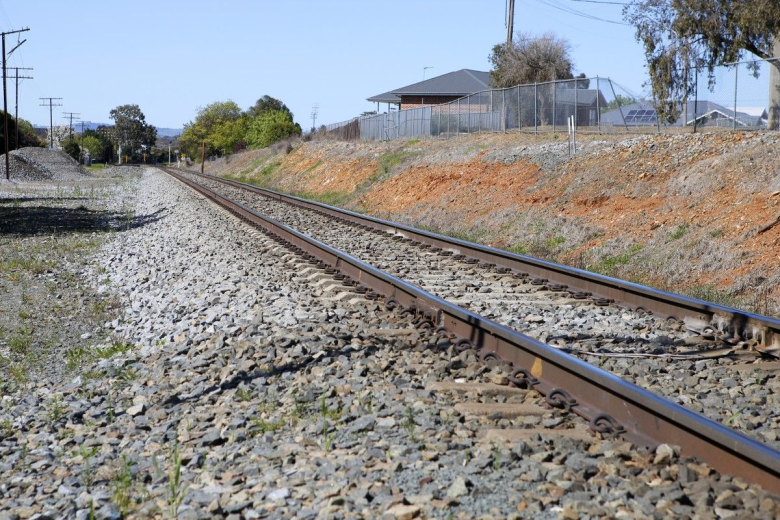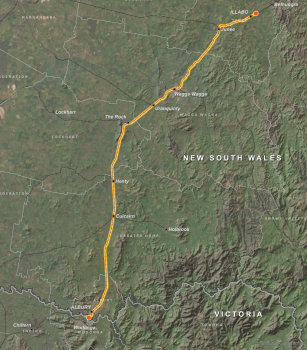
The government has been accused of giving stakeholders insufficient time to provide a proper response to plans for the Albury to Illabo section of the Inland rail.
According Wagga Wagga City Council, that’s created a risk that public concerns won’t be addressed before work goes ahead.
WWCC is one of the LGAs that will be affected by the works, along with Albury City, Junee Shire, Lockhart Shire and Greater Hume.
The ARTC released its Response to Submission on the EIS and Preferred Infrastructure Report last month but stakeholders only had three weeks to make submissions.
That isn’t long enough, Wagga Wagga’s Director Strategy and Projects Phil McMurray says.
“There are 34 files and folders, 709MB of data and we estimate in the region of 6000 pages of report, and these documents are, in places highly technical,” Mr McMurray said.
“This has all the hallmarks of a rubber stamping process.”

Upgrades to accomodate double stacked freight trains
The Albury to Illabo section of Inland Rail includes upgrading infrastructure and sections of track along an approximately 185km existing rail corridor from the Victoria-NSW border to Illabo in regional New South Wales.
The ARTC says the work is needed to ensure there’s sufficient height and width to support the safe running of double-stacked freight trains.
Mr McMurray says Council supports the Inland Rail, and the Albury to Illabo section, as a nationally significant project with the potential to generate new opportunities for the region.
However, Council argues in its submission that it’s clear the ARTC has failed to properly consider the future operational impacts of the project or take into account submissions from the local community, including adverse effects it may have on local businesses and services.
Key concerns include:
- impact on the road network from level crossings
- impact of sound and vibration
- unresolved safety issues
“Our position remains that all impacts of Inland Rail … must be fully assessed and addressed before construction commences as the community will be left with no opportunities for recourse once the Inland Rail project has been completed,” Mr McMurray says.
“The risks that the City of Wagga Wagga and the local community will be left with adverse impacts with no avenues for rectification available from any level of government must be mitigated before the project proceeds any further.”
Plans deferred
Under original plans, the 1,600km Inland Rail freight rail project was designed to connect Melbourne and Brisbane via regional Victoria, NSW and Queensland.
However in response to Kerry Schott’s Independent Review of the Inland Rail released in April, which found a cost blowout from $16.4 billion to $31.4 billion, the government amended its plans to focus on finishing the Melbourne to Parkes portion by 2027 and deferring the portion from Parkes to Brisbane.
It also reduced operational train numbers for 2025 and 2040, representing a 50 per cent reduction in operations.
Council argues that train numbers, plus the possibility of a full Brisbane to Melbourne operational scenario must still be taken into consideration.
Wagga has previously advocated for the city to be bypassed. However it says it has been informed by government sources that isn’t possible and the City will have to “make the best” of the line running through it.
Martinus Rail has been appointed to design and construct enhancement works on the Albury to Illabo and Stockinbingal to Parkes sections of Inland Rail.
Comment below to have your say on this story.
If you have a news story or tip-off, get in touch at editorial@governmentnews.com.au.
Sign up to the Government News newsletter
And the saga continues. the Bowman viaduct is the key link in this $34 Billion rail link.
A choke point that will remain. We can have new sections in northern stages of this link. that Span flood plains on other rivers that have no speed limits.
The very purpose of Inland rail was to remove these low speed choke points to allow rail to be competitive to road transport and relieving the carbon footprint of years of under funding this strategic Rail corridor .
Yes the Short time that the public gets to make sense of the vast documentation. Where there is no net gain by whats offered in segments such as the Wagga Wagga in contrast to other sections is scandalous.
Yes this projects been mismanaged in the past.
But the project is too valuable to loose the once in a life time opportunity to get a better outcome for ALL now.
The federal government must stop wasting public money on rediculous referendums and get this important piece of infrastructure completed,